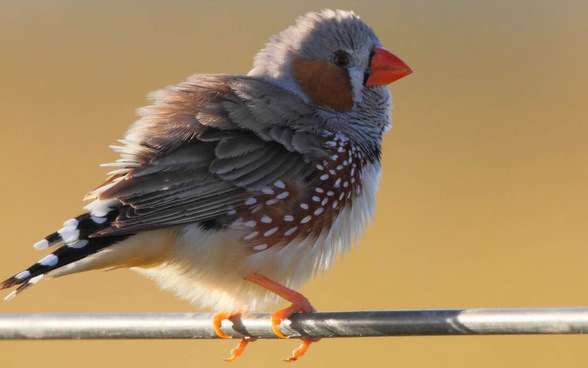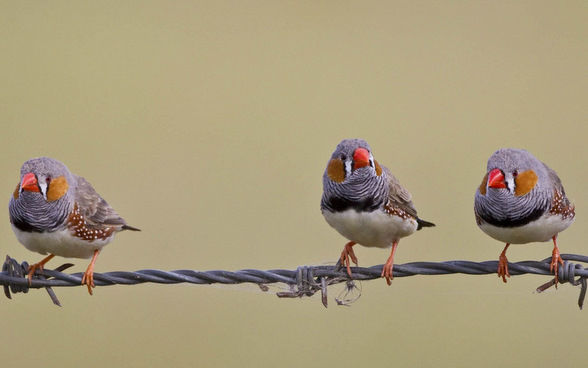Behaviour
Call
A loud nasal twanging “tiarr” and abrupt “tet tet” from flocks in flight.
Diet
It forages on the ground for fallen seeds rather than pulling down and stripping seeds from the heads of plants. It occasionally takes flying insects especially when feeding nestlings.
Flight
Bouncy and undulating.
Breeding
In the driest regions it is quick to nest after good rain. The female picks a nest site, usually low in a dense, thorny shrub or tree. The nest is a bulky, untidy, rounded dome with a deeply hooded side entrance. The clutch is normally 4 – 6 eggs and both sexes incubate the eggs for 12 -16 days and feed the nestlings.
Field Guide
Improve your identification skills. Download your Zebra Finch field guide here!





